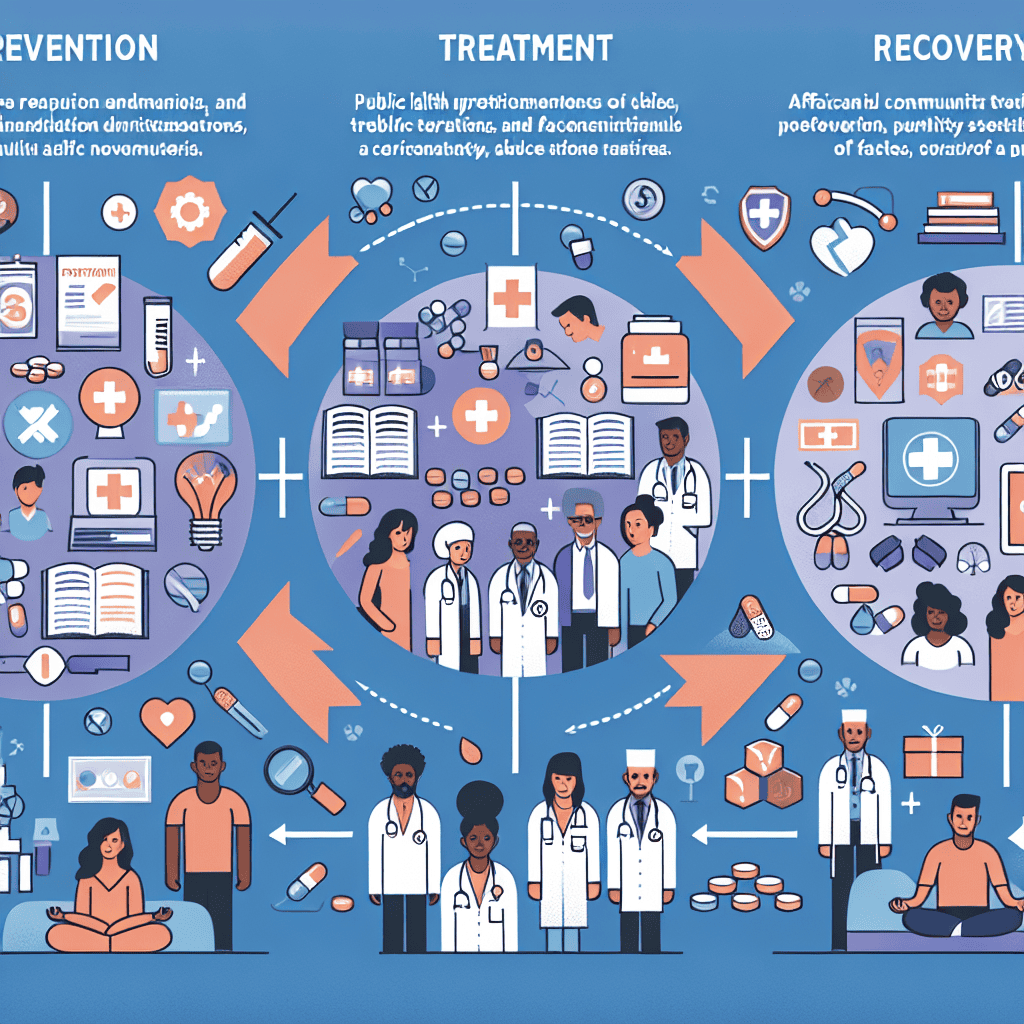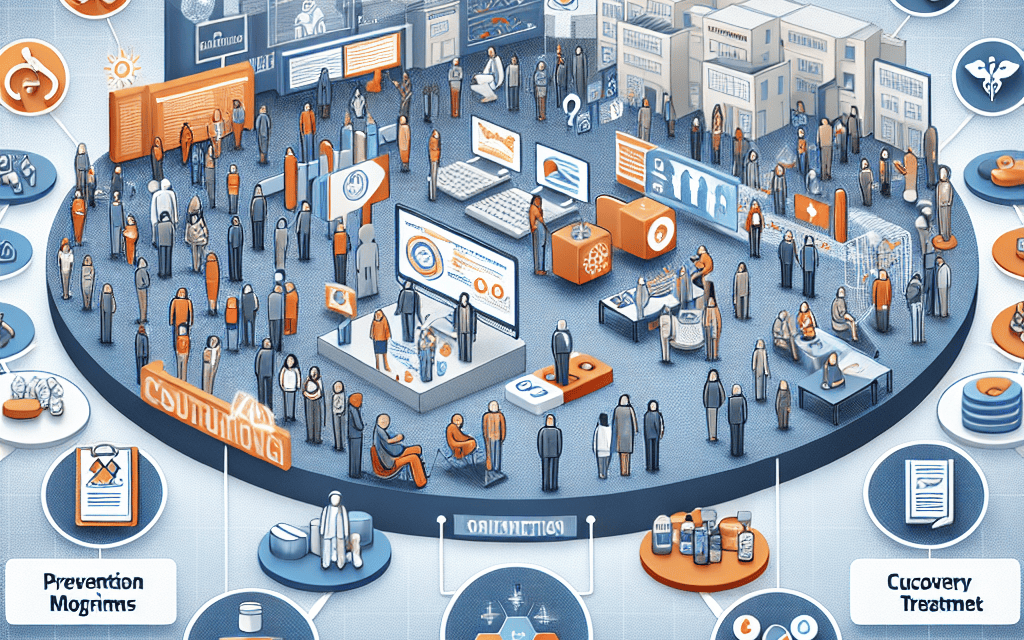-
Table of Contents
- Opioid Crisis Solutions: Prevention, Treatment, and Recovery Strategies
- Prevention Strategies
- Education and Awareness Programs
- Prescription Monitoring Programs (PMPs)
- Regulation and Policy Changes
- Community-Based Prevention Initiatives
- Early Intervention and Screening
- Treatment Strategies
- Medication-Assisted Treatment (MAT)
- Behavioral Therapies
Opioid Crisis Solutions: Prevention, Treatment, and Recovery Strategies

The opioid crisis has emerged as one of the most pressing public health challenges of the 21st century, affecting millions of individuals and families across the globe. This article delves into comprehensive solutions to the opioid crisis, focusing on prevention, treatment, and recovery strategies. By exploring these areas, we aim to provide a holistic understanding of how to combat this epidemic effectively.
Prevention Strategies
Education and Awareness Programs
Education and awareness are foundational to preventing opioid misuse. By informing the public about the risks associated with opioid use, communities can reduce the incidence of addiction. Schools, workplaces, and community centers play a crucial role in disseminating this information.
For instance, school-based programs that educate students about the dangers of drug use have shown promise. Programs like D.A.R.E. (Drug Abuse Resistance Education) have evolved to include evidence-based strategies that focus on decision-making skills and peer resistance. These programs aim to equip young people with the knowledge and skills to make informed choices.
Moreover, public awareness campaigns can reach a broader audience. Campaigns such as “The Truth About Opioids” by the Ad Council use real stories and data to highlight the impact of opioid addiction, encouraging individuals to seek help and support.
- Implementing comprehensive drug education in schools.
- Utilizing social media and traditional media for public awareness campaigns.
- Engaging community leaders to spread awareness.
Prescription Monitoring Programs (PMPs)
Prescription Monitoring Programs are state-run databases that track the prescribing and dispensing of controlled substances. These programs are designed to identify and prevent prescription drug abuse by providing healthcare providers with critical information about a patient’s prescription history.
PMPs have been effective in reducing “doctor shopping,” where patients visit multiple doctors to obtain prescriptions. By allowing prescribers to access a patient’s prescription history, PMPs help ensure that opioids are prescribed responsibly and only when necessary.
States that have implemented robust PMPs have seen a significant decrease in opioid prescriptions and related overdose deaths. For example, New York’s I-STOP program mandates that prescribers check the PMP before issuing a prescription for opioids, resulting in a 75% reduction in doctor shopping.
- Mandatory PMP checks before prescribing opioids.
- Integration of PMPs with electronic health records for ease of access.
- Regular audits and updates to ensure data accuracy.
Regulation and Policy Changes
Regulatory and policy changes are essential in curbing the opioid crisis. Governments at all levels must implement policies that limit the availability of opioids while ensuring that patients with legitimate needs have access to pain management.
One effective policy is the implementation of prescribing guidelines that limit the quantity and duration of opioid prescriptions. The Centers for Disease Control and Prevention (CDC) has issued guidelines recommending that opioids be prescribed at the lowest effective dose and for the shortest duration necessary.
Additionally, policies that promote the use of non-opioid pain management alternatives can reduce reliance on opioids. Encouraging the use of physical therapy, acupuncture, and other non-pharmacological treatments can provide effective pain relief without the risk of addiction.
- Implementing strict prescribing guidelines.
- Promoting non-opioid pain management alternatives.
- Increasing funding for research on pain management.
Community-Based Prevention Initiatives
Community-based initiatives are vital in addressing the opioid crisis at the local level. These initiatives involve collaboration between local governments, healthcare providers, law enforcement, and community organizations to develop tailored solutions that meet the specific needs of the community.
For example, the Community Anti-Drug Coalitions of America (CADCA) supports local coalitions in implementing evidence-based strategies to prevent substance abuse. These coalitions work to reduce access to opioids, increase awareness, and provide support for individuals and families affected by addiction.
Community initiatives can also include the establishment of drug take-back programs, which provide a safe and convenient way for individuals to dispose of unused medications. These programs help prevent the diversion of prescription drugs for non-medical use.
- Establishing local coalitions to address substance abuse.
- Implementing drug take-back programs.
- Providing support and resources for affected families.
Early Intervention and Screening
Early intervention and screening are critical components of prevention. By identifying individuals at risk of opioid misuse early, healthcare providers can intervene before addiction develops.
Screening tools such as the Opioid Risk Tool (ORT) and the Screening, Brief Intervention, and Referral to Treatment (SBIRT) model can help identify patients at risk of opioid misuse. These tools assess factors such as family history, personal history of substance abuse, and psychological conditions that may increase the risk of addiction.
Once at-risk individuals are identified, healthcare providers can offer interventions such as counseling, education, and alternative pain management strategies. Early intervention can prevent the progression to addiction and reduce the overall burden of the opioid crisis.
- Implementing routine screening for opioid misuse risk factors.
- Providing early intervention and counseling for at-risk individuals.
- Training healthcare providers in the use of screening tools.
Treatment Strategies
Medication-Assisted Treatment (MAT)
Medication-Assisted Treatment (MAT) is a highly effective approach to treating opioid use disorder (OUD). MAT combines the use of FDA-approved medications with counseling and behavioral therapies to provide a comprehensive treatment plan.
Medications such as methadone, buprenorphine, and naltrexone are used to reduce cravings and withdrawal symptoms, allowing individuals to focus on their recovery. These medications have been shown to improve treatment retention and reduce the risk of relapse.
For example, a study published in the Journal of Substance Abuse Treatment found that individuals receiving MAT were more likely to remain in treatment and less likely to relapse compared to those receiving only behavioral therapy. MAT is considered the gold standard for OUD treatment and is endorsed by major health organizations, including the World Health Organization (WHO) and the Substance Abuse and Mental Health Services Administration (SAMHSA).
- Utilizing FDA-approved medications for OUD treatment.
- Combining medication with counseling and behavioral therapies.
- Ensuring access to MAT for all individuals with OUD.
Behavioral Therapies
Behavioral therapies are a critical component of opioid addiction treatment. These therapies address the psychological and behavioral aspects of addiction, helping





